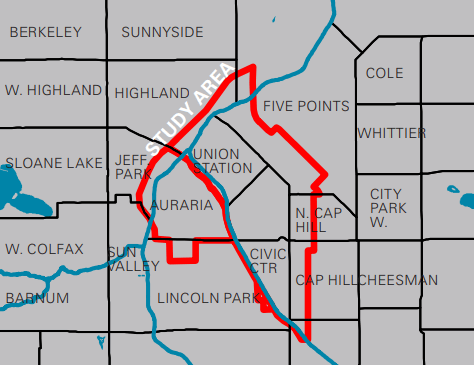In 50 years or so, Future You might saunter down 15th Street enjoying the shade of a 60-foot Kentucky Coffeetree. It would be a huge departure from today, a day with virtually no trees on 15th, at least none large enough to relieve a summer sweat.
That tree might be one of 400 or 500 saplings planted in the next three years by the Downtown Denver Partnership, Denver Parks and Recreation and property owners who aim to drastically improve the tree canopy in the city's core.
Downtown Denver has about 1,800 trees. That's good for a canopy that covers just 4 percent of the area. And that's good for last place among the 20 largest cities in the U.S., according to the Downtown Denver Partnership.
"I think if you walk our streets on a hot day, we all sort of realize what it's like to have a city with a downtown core with very little shade," said Randy Thelen, vice president of economic development for the Partnership.

Planting and maintaining 500 trees is a major investment -- about $9 million -- that will fill gaps in the sparse canopy but only to an extent. Bernstein said raising the shade cover to 10 percent would demand 2,500 more trees.
Downtown is so bare because it's a hard-knock environment for trees to grow up in.
Urban trees tend to die young because of shallow soil, little natural water, snow-melting chemicals and litter, along with an arid climate and an oven-like urban core that suffers from heat-island effect.
Maintenance is a crucial piece of the program, with $1.5 million dedicated to tree care post-planting -- pruning, fertilizing, watering.
Larger planters that can hold more soil are also crucial. One tree needs about 1,000 cubic feet of soil, according to Michael Swanson, Denver's acting chief forester.
"Trees downtown now grow for a while but they just run out of space," Swanson told Denverite.
Another huge problem, Swanson said, is the types of trees that are planted. In the past, downtown has sported trees that have no real business in an arid Colorado climate, let alone a jungle of heat-absorbing concrete, reflective glass and sun-blocking towers.
No decisions have been made on the species, but Swanson said he would like to see the following based on their ability to thrive here, even if some aren't native: oaks, elms, honey locusts, pears, Peking lilacs, Japanese lilacs and Kentucky coffeetrees.
The trees aren't just for shade and aesthetics. They're to deter climate change.
"The impervious area of the downtown core is the highest anywhere throughout the City and County of Denver," said Mark Berstein, head of downtown planning for Parks and Recreation, during a City Council committee meeting Tuesday. "We also know, too, on many days, particularly in the summer, air quality is poor. As we continue to experience a growing downtown population, it really becomes imperative that we think really critically about how we are going to create a healthy downtown."












